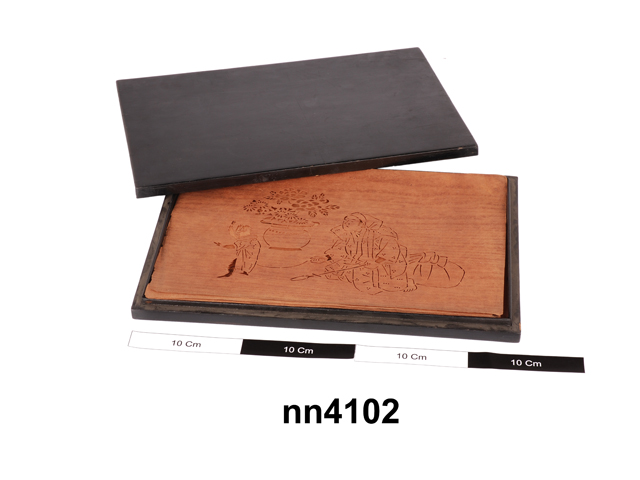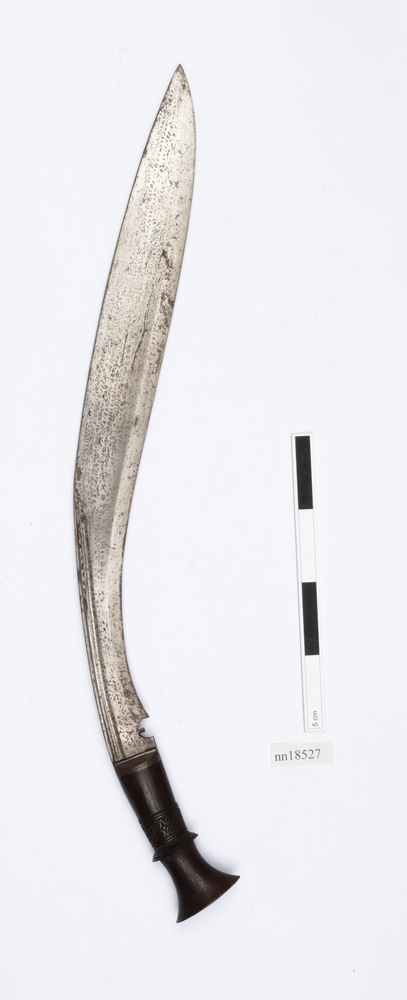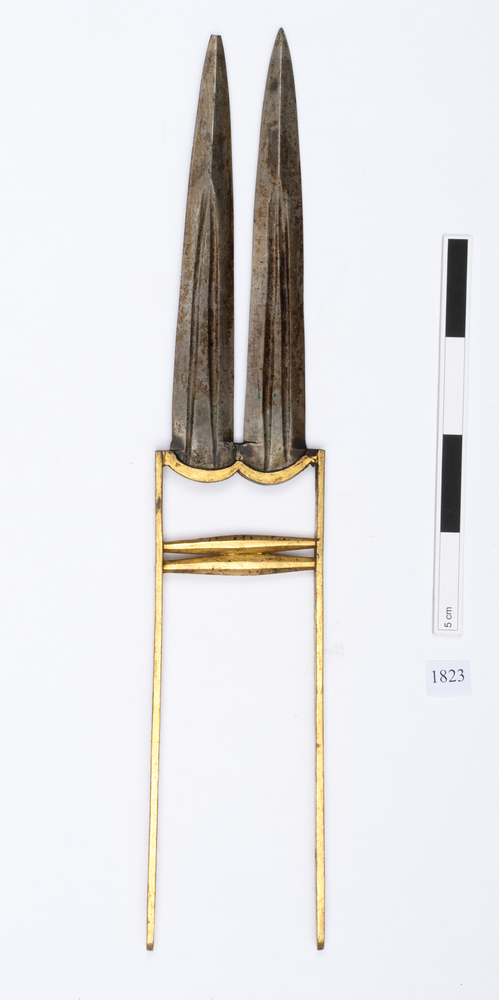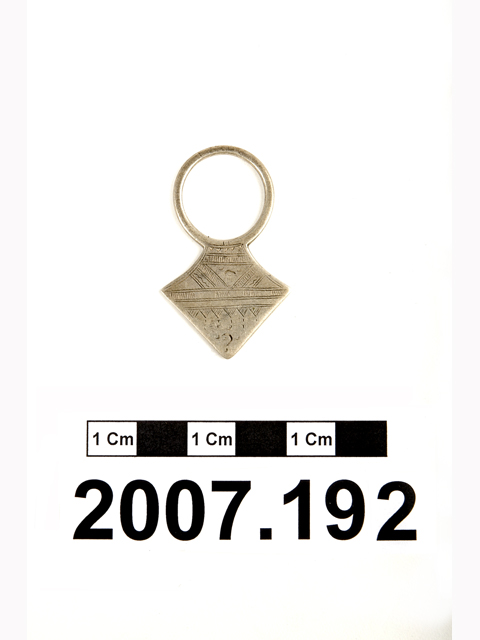
Wooden box containing ten brown paper paper stencils, probably for use in textile decoration, perhaps for cotton tenugui, or towels. (i) box base, wooden, painted black. Sheet of white paper beneath stencils. (ii) box lid, wooden, painted black. (iii) stencil depicting street performer (saru-mawashi is the type of performance) with monkey in kimono and flower pot and large furoshiki. (iv) stencil depicting man woman and child, the child with a bamboo rake and furoshiki. It is late autumn or winter. The woman has a covered face, the man has a bamboo rake. They are preparing for the torino-ichi ceremony, a shrine festival when people 'rake in' happiness and treasure. A famous location for this festival is Asakusa near Tokyo. In the background are two flags and a shrine or house, on the left a rock which may represent a kind of god for travellers or a guide post for same, and a tree. (v) stencil depicting standing rooster and a lying hen, with flowers on both sides. (vi) stencil depicting two birds, that on the right flying, that on the left on a rock. To the right are chrysanthemum flowers, to the left another plant. traces of red pigment indicate that this has been used. (vii) stencil depicting a lotus flower on the left, and a standing water fowl in water in the centre with branch of tree and flying bird above. (viii)stencil depicting two women, one carrying a baby on her back, both in kimonos and geta shoes, one with a child and wearing an apron (servant?), the other more elegant. In background trees, plants, mountains and two crows, suggesting evening. (ix)stencil depicting large bird (pheasant?), eating and small bird flying, a branch of a tree and flowers. (x) stencil depicting three frogs in kimonos, sitting and drinking sake. In the centre a tray with bowls and chopsticks. Folding screen in background. Central frog wearing haori is in charge. Pot for sake and bowls on ground. (xi) stencil depicting lake, one Oshidori bird in the water (Japanese like thse birds as they are always seen in pairs so suggest couples. When a wife and husband have a good marriage they are called an 'oshidori couple'.) One small bird flying, some flowers and plants on the bank. (xii) stencil depicting two men, one wearing a kachimaki tenugui on his head and a han ten (coat made of cotton). These are the clothes of a craftsman and he is repairing a wall. The other figure is ploughing. Flowers in the background and a storehouse with two nails.

































































































































































































































































































































































































































































































































